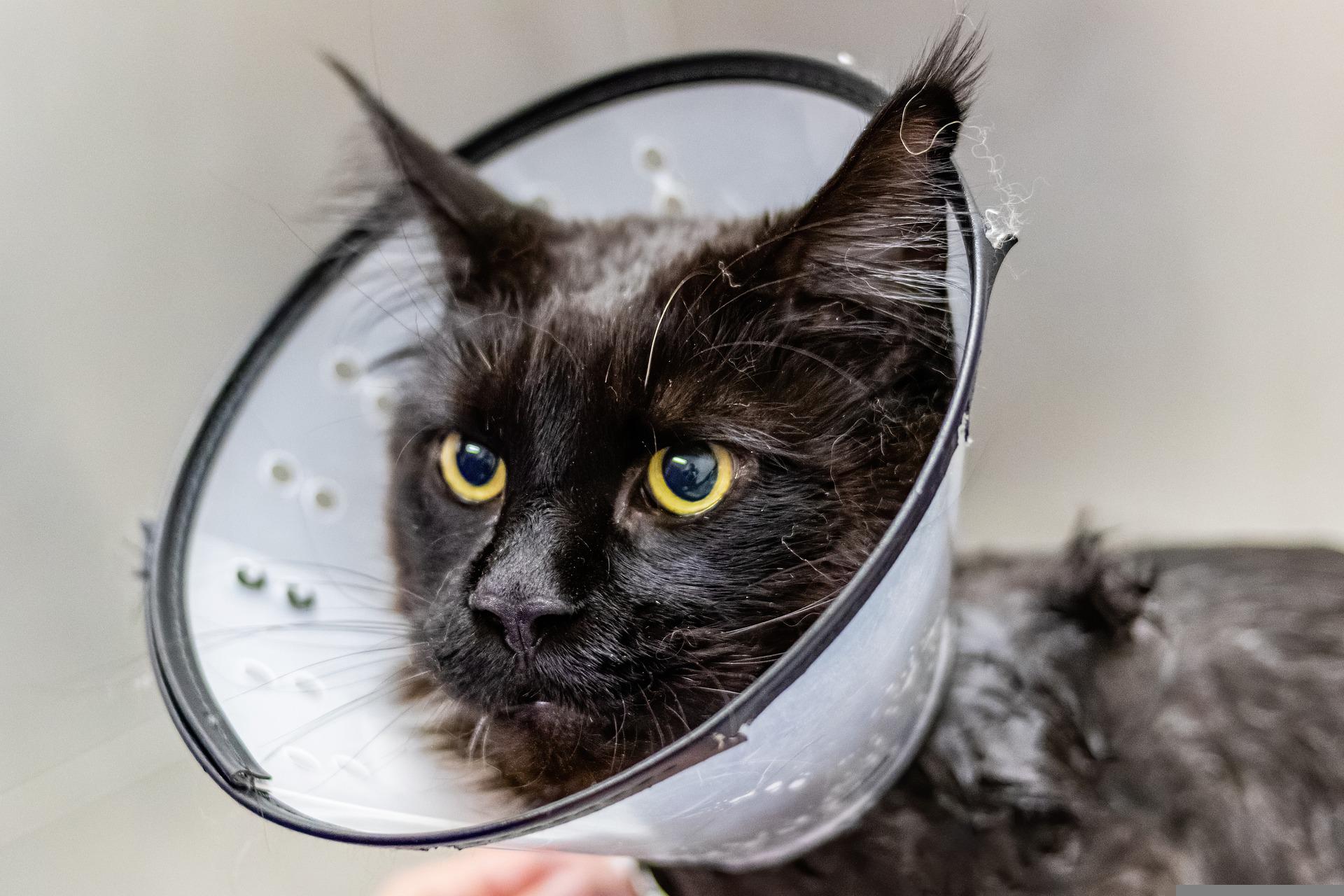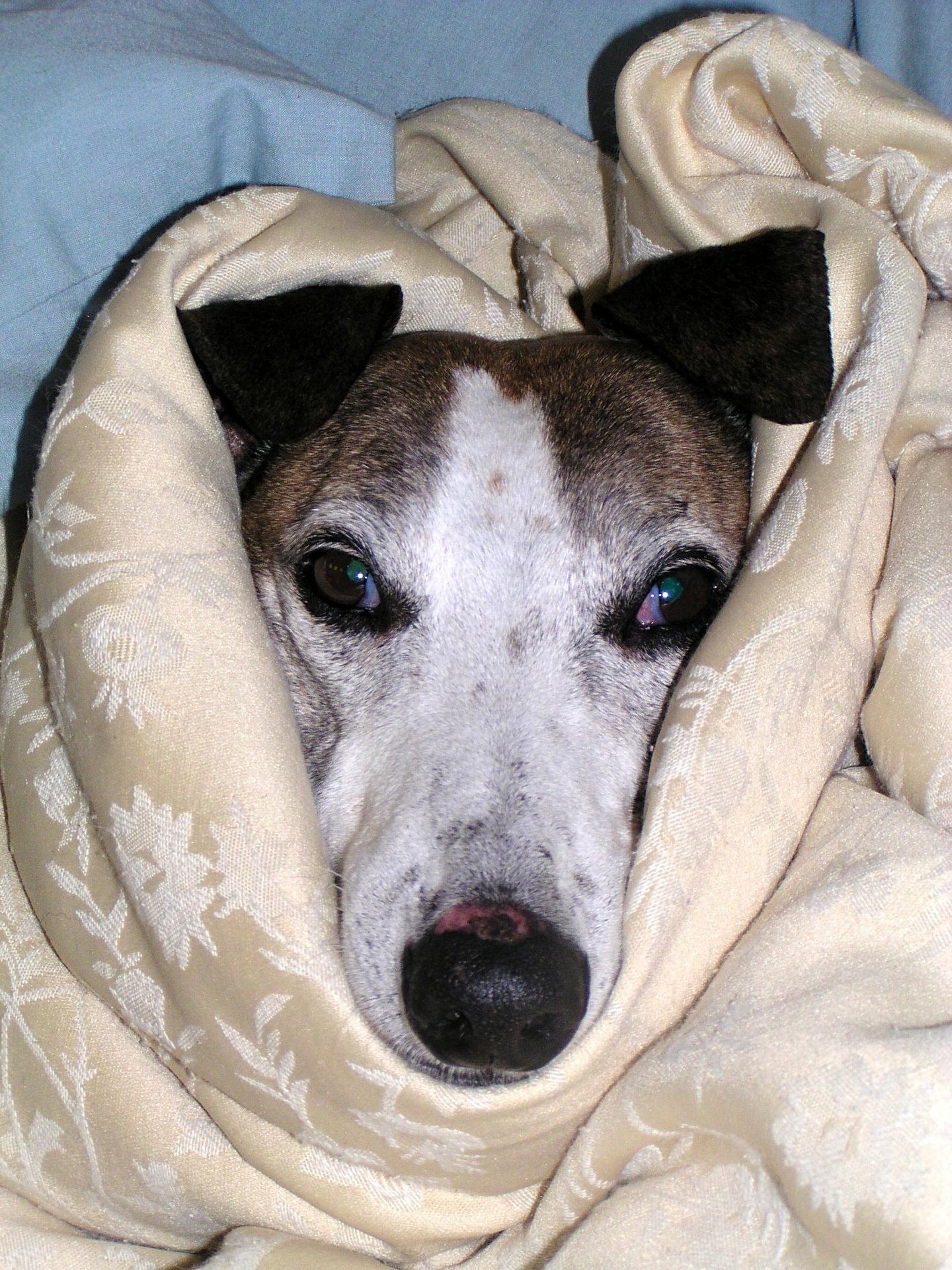Your pet is home after surgery. Now the fun part begins. Are you stressed out? Confused? Panicked?
There is no doubt that recovering from surgery can be rough for any pet, and any pet owner, so here are some tips to make sure your pet’s recovery goes smoothly… and you get some sleep.
1. Understand what you need to do after surgery
It is very important that you are well prepared during the consultation so you know what to do after surgery.
This includes where you should keep your pet, how much to feed, how much activity to provide, what the various medications do, when the stitches should come out, etc.
All of this will be clearly explained to you, and all of it will be typed in your discharged instructions. So if you forget when the stitches need to come out, or how often to give a medication, fear not, you will have it in writing.
2. Keep the cone on
Well-intentioned pet owners remove the E collar – the plastic cone – during meals or when they are sitting with their pet. While it may sound like a good idea, it has two main disadvantages:
- You are teaching your pet that the cone CAN come off. So when you leave after putting it back on, they may start to hate it, and they may try to get rid of it. Then they might lick their incision, which obviously defeats the purpose.
- When you put the cone back on AND leave your pet, it feels like a double whammy from their standpoint. They may take the cone as a punishment when they’ve done nothing wrong, and you’re leaving them on top of it!
On that note, well-intentioned pet owners sometimes will switch to another type of cone: a “donut” shaped device or a soft cone. We rarely recommended those, as they may still allow your pet to lick the incision. The marketing is brilliant, yet the results rarely are… as some of our patients have unfortunately experienced.
Look at it this way: wearing a cone for a few days is much better than an open incision, which may need another surgery to close it, or an infected incision, or an ugly scar for life…
Please note that a few patients don’t go home with a cone because they can’t physically lick their incisions.
3. Confine your pet
Yeah… we get it… Confining your pet for weeks or months is not fun.
Yet we recommend it for good reasons: for the benefit of your pet.
It’s not a punishment; it’s a condition for success.
Confinement to a small area will allow the surgery site to heal properly, whether it be a bone, the skin, the muscles of the belly, or any other area that has stitches.
Then again, “small” is relative. We’re much more concerned about your pet jumping on furniture than walking around or pacing in circles all day. Walking peacefully is not a bad thing, so the area you choose should be large enough to allow it.
When we say “Confine your pet 24/7,” we mean it. Taking your pet out of confinement to watch TV or hang out when you’re home is not a good idea. When you have to leave, putting your pet back into the small area might seem like a punishment, and your pet will be sad. Clearly, that’s not your goal, right?
We have one shot at getting your pet on the road to recovery, and confinement is the condition to get there.
4. Give medications until gone
Most patients go home with antibiotics and pain medications.
Antibiotics are dispensed to prevent infection, so make sure you give them until they’re gone – most often for one week. Note that in some well-chosen patients, we don’t send antibiotics home.
Pain medications are obviously given to decrease pain. So please also give them until they’re gone. Occasionally, a client will stop giving them because their pet acts comfortably. Well, they’re comfortable because of the pain medications, which proves that they’re doing their job!
Now, if your pet has a reaction (e.g. vomiting) or is completely out of it, or is still in pain, please call the practice so we can correct the situation. We’re just a phone call away!
5. Ask for a sedative
If you feel that your pet is going to be too active during confinement, then please request a mild sedative or tranquilizer.
We say “mild” because the purpose is not to turn your pet into a zombie who won’t move at all. The goal is to take the edge off and help your pet be more content with confinement.
To conclude, a successful outcome is not all that difficult after surgery:
- Understand the postop instructions
- Keep the cone on 24/7
- Strictly confine your pet
- Give all medications until gone
- Request a sedative
If you follow these simple tips, your pet will have a much higher chance of having a successful outcome and going back to a life of running, jumping, and fun.
If you would like to learn how we can help your pet with safe surgery and anesthesia, contact us through www.LRVSS.com
Phil Zeltzman, DVM, DACVS, CVJ, Fear Free Certified
www.LRVSS.com


